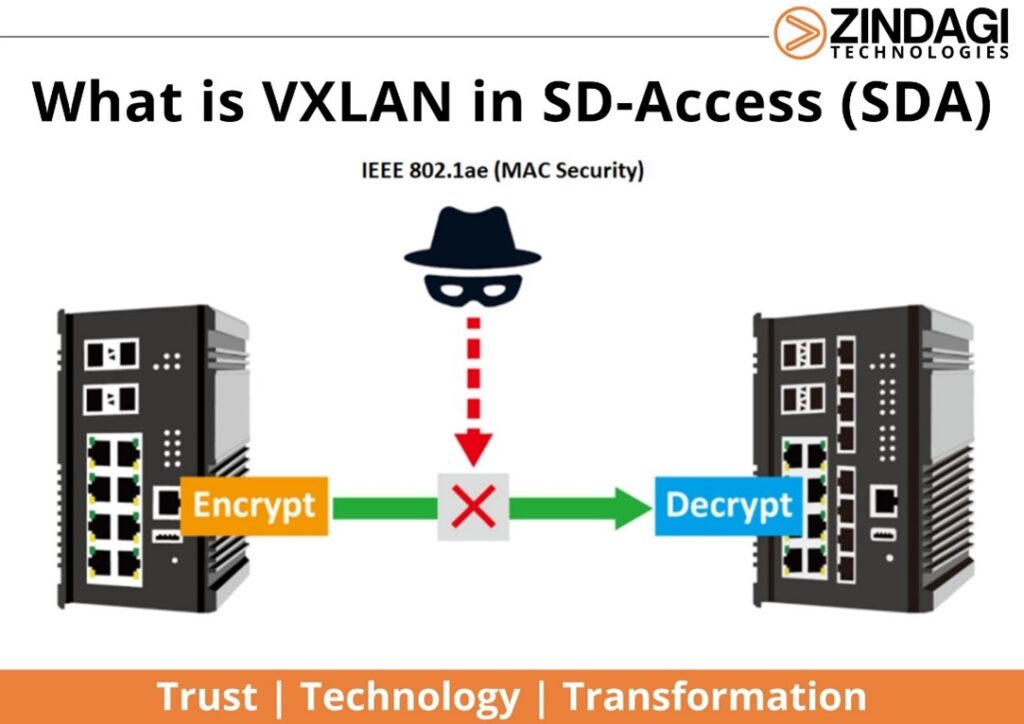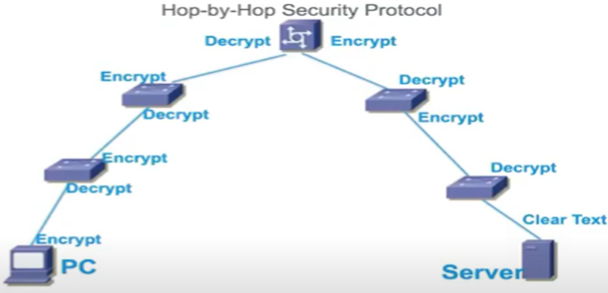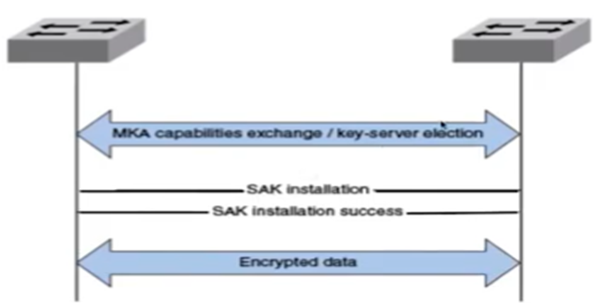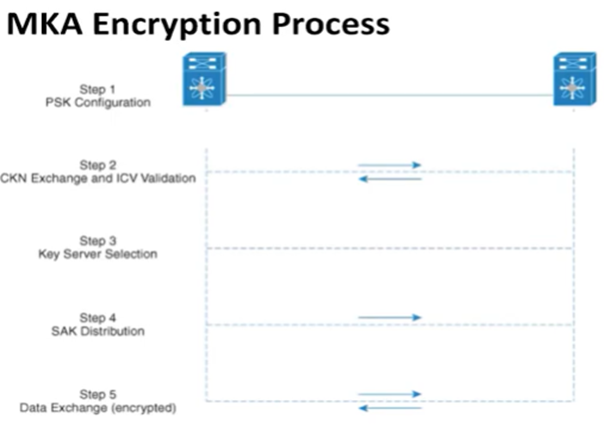What is VXLAN in SD-Access (SDA)

In this article, we are going to discuss VXLAN & its role in our network environment.
The following topics will be covered in this article:
- What is VXLAN?
- Why VXLAN as a solution?
- How VXLAN works?
- Configuration of VXLAN
What is VXLAN?
VXLAN stands for Media Access Control Security. It was introduced in 2006 by IEEE 802. 1ae.It operates at the Data-link layer (Layer-2) and secure point-to-point link. It has become an important encryption technology. It provides secure communication for Ethernet Networks.
VXLAN is based on the standard Ethernet Frame format and its encoding is as follows:

Why VXLAN as a Solution?
Whenever VXLAN is configured, each packet on the wire is encrypted.
We have several advantages of using VXLAN in our network environment:
- Confidentiality
- Integrity
- Flexibility
- Network Intelligence
Confidentiality
VXLAN protects our data from unauthorized access. An unauthorized user should not be able to reach the content of data. So, VXLAN provides confidentiality by using strong encryption.
Integrity
When we say integrity that means protecting our data from unauthorized alteration. We should have a mechanism to detect modification of data. So, VXLAN performs an integrity check to prevent data tempering and make sure that data is not modified in transit.
Flexibility
VXLAN is flexible as we can enable/disable it on any selective interface on a VXLAN-capable device.
Network Intelligence
VXLAN does not hide the content of data from network devices as VXLAN is hop-by-hop encryption. When we say hop by hop encryption means that the data will be decrypted on the ingress port & encrypted on the egress port. The data will be in clear text form on a network device.

How VXLAN works?
There are mainly two steps involved in data security:
- VXLAN uses MKA (MACsec Key Agreement) to discover and establish the session with peers.
- VXLAN uses SAK (Security Association Key) to encrypt and decrypt the data traffic.

- When MACsec enabled interface comes up they start exchanging MKA PDU’s. If the parameters are valid then the peer will be discovered and accepted.
- Now we will see the concept of Key-Server. It is responsible to generate and distribute Security Association Key (SAK). The key server is elected on the basis of priority (default = 16).
- Once SAK is formed, MACsec uses SAK to encrypt the data traffic on a protected link or secure link.

Here we will see about the Pre-Shared Key (PSK) mechanism which is used for “Authentication” and MKA (MACsec Key Agreement) protocol which is used for “Key Management”.
Step1: We configure PSK on both devices. It is also known as CAK (Connectivity Association Key). It is used for mutual authentication. Once peer authentication gets successful, Connectivity Association (CA) will be formed between the peers.
Step2: Then they will exchange CKN (Connectivity Association Key Name) and validate ICV (Integrity Check Value) with PSK. CKN is used for configuring the key value.
Step3: Then key server selection will happen. It is responsible to generate and distribute SAK.
Step4: Once SAK is formed, MACsec uses SAK to encrypt the data on the protected link.
Configuration of VXLAN
Configuring MACsec involves the following steps:
- Creating a VXLAN keychain
- Creating a user-defined VXLAN policy
- Applying VXLAN configuration on an Interface
Creating a VXLAN keychain:
Switch (config) # key chain <NAME> macsec
Switch (config-keychain-macsec) # key 01
Switch (config-keychain-macsec-key) # key-string <128 bit or 256 bit>
Switch (config-keychain-macsec-key) # life-time
Creating a user-defined VXLAN policy:
Switch(config) #mka policy <MKA Policy Name>
Switch(config-mka-policy) # macsec-cipher-suite ?
gcm-aes-128 GCM-AES-128 Cipher Suite
gcm-aes 256 GCM-AES-256 Cipher Suite (choose any)
Switch(config-mka-policy) # confidentiality-offset ?
0 MACsec Confidentiality Offset value of 0 octets (bytes) (choose any)
30 MACsec Confidentiality Offset value of 30 octets (bytes)
50 MACsec Confidentiality Offset value of 50 octets (bytes)
Switch(config-mka-policy) # key-server priority ?
<0-255> Key Server Priority (255= never act as Key Server)
Applying VXLAN configuration on the Interface
Switch(config)# interface gi0/0/1
Switch(config-if) # macsec
Switch(config-if) # mka policy MKA_POLICY
Switch(config-if) #mka pre-shared-key key-chain <NAME>
In this blog, we learnt the basic concept and the requirement of MACsec. We also learnt the workflow of MACsec in our network environment and covered the implementation part as well on a device. Drop us a message on +91 9773973971.
Author
Sani Singh
Consultant – Enterprise Networking

Unknown
October 30, 2022Nice Sani bhai!